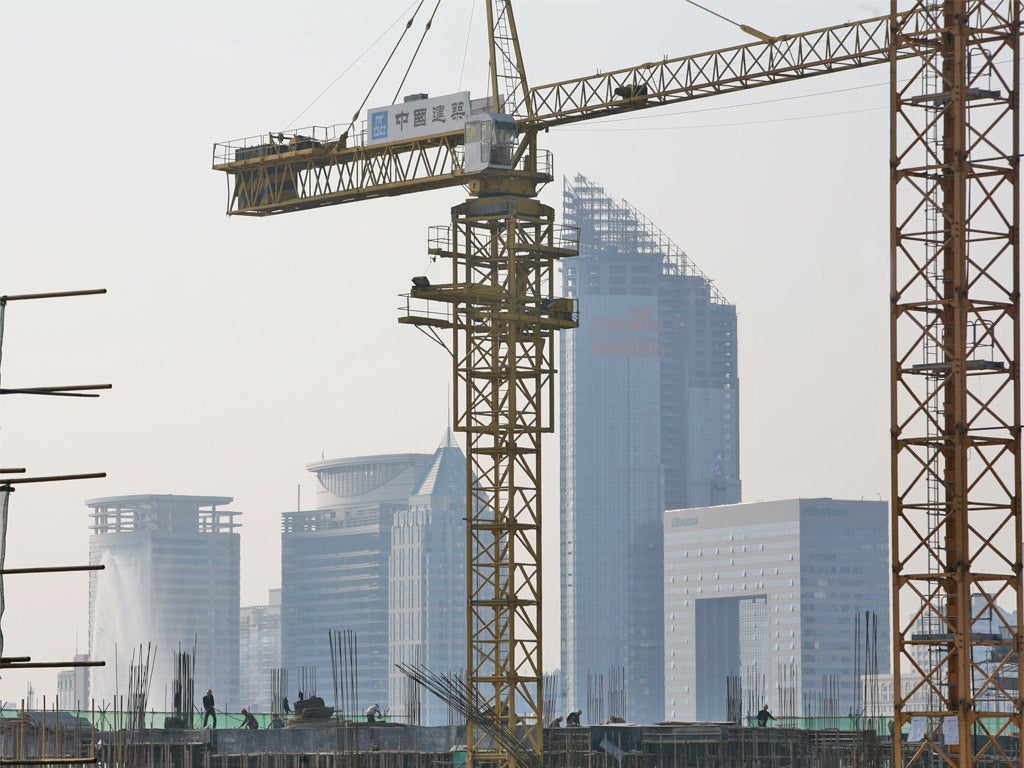Shadows on the horizon: The rise and rise of skyscrapers
Super-tall skyscrapers are popping up all over the place. A sign of growing prosperity, presumably? Far from it, says a new report. Tom Bawden discovers why prestigious high-rises tend to presage economic doom

You might think a boom in skyscraper construction signals that all is well with the economy – especially if spearheaded by the next "world's tallest building". But you would be wrong. Patterns of tall-building construction do indeed appear to be a reliable barometer of what's in store for the economy. But it seems that what the crowning of a new skyscraper king actually heralds is, typically, a recession.
Click HERE to view graphic
This is the conclusion of an authoritative new report, which will fuel concerns that the economic juggernauts of China and India are, at the very least, running out of steam, with potentially significant consequences for UK and global business.
From the first skyscraper in New York in 1870 to the completion of the current tallest building in Dubai in 2010, the story has been the same: the construction of the world's tallest building is followed by an economic crash.
There is an "unhealthy correlation between construction of the next world's tallest building and an impending financial crisis", according to the report, by Barclays Capital, which examines the case of 18 "world's tallest buildings" in the past 150 years and links them to 10 recessions.
The Empire State Building was completed in New York in 1931 as the Great Depression got under way, while the world's current tallest building – the 2,717ft, 163-storey Burj Khalifa skyscraper – was built in Dubai in 2010 as the emirate came close to economic meltdown.
Not convinced? How about Chicago's Willis Tower – formerly known as the Sears Tower? Completed in 1973, this 1,450ft former tall-building gold medallist was finished as an oil shock combined with an already-fragile global economy to tip the US and the world into recession.
Or the 1,483ft, 88-storey Petronas Towers, which were completed in Kuala Lumpur in 1998 – only for a region-wide economic crisis to follow, along with the collapse of Asian currencies.
As Andrew Lawrence, the author of the report, explains, the pattern is typically the same. Buoyed by an economic boom and the availability of cheap credit, property developers are emboldened to take on increasingly ambitious skyscrapers. By the time these mega-structures are finished a few years later, the world is generally a very different place – the economic bubble is bursting, reality has hit, the banks are nursing losses on their loans and credit is much harder to come by. But by then, the building is built, providing a potent symbol of the excesses of recent years.
"Skyscrapers are perhaps the ultimate architecture of capitalism," Mr Lawrence says. "Often the world's tallest buildings are simply the edifice of a broader skyscraper building boom, reflecting a widespread misallocation of capital and an impending economic correction."
The report makes no mention of London, but that doesn't mean the UK is off the hook. Although its skyscrapers may not be in the same league as those of the US, Asia and the Middle East, the pattern of architectural exuberance preceding an economic fall is just as plain, according to Mr Lawrence.
He points to the completion in 1980 of Tower 42 at 25 Old Broad Street in the heart of London's financial district, just ahead of the early-1980s recession. That 600ft, 47-storey building was Britain's tallest until 1991, when One Canada Square was completed in Canary Wharf. That 800ft, 50-floor building preceded the recession of the early 1990s.
One Canada Square is set to lose its crown later this year when the "Shard" is completed in the London Bridge area of the capital.
The 1,017ft, 72-storey Shard had been a source of pride for Londoners because it will be the EU's tallest building. However, following yesterday's report, they may think again.
Mr Lawrence stopped short of suggesting that the completion of the Shard signalled a further decline in Britain's economic fortunes – though he certainly hinted at a link.
"There have been periods when very tall buildings in London have been completed in serious economic times... Building of the Shard of Glass started when monetary policy was extremely loose," he said. Nor is the Shard London's only major construction project. Others include the "Cheese Grater" and the "Walkie Talkie" tower in the City.
But if the patterns identified in the report repeat themselves in the coming years, it is India and China who should be most concerned. "Investors should pay particular attention to China, today's biggest bubble builder," the report says.
The report notes that China will be home to just over half of the 124 skyscrapers due to be completed globally in the next six years, increasing its stock of such buildings by 87 per cent. India is set to increase the number of buildings it has that are higher than 240m, from two to 16 in the next five years.
Join our commenting forum
Join thought-provoking conversations, follow other Independent readers and see their replies
Comments